Camille Claudel in 5 Sculptures
Camille Claudel was an outstanding 19th-century sculptress, a pupil and assistant to Auguste Rodin, and an artist suffering from mental problems. She...
Valeria Kumekina 24 July 2024
Juana Romani (née Giovanna Carolina Carlesimo) was an Italian-born French model and painter working at the turn of the 20th century. Despite reaching rare levels of fame in France and being sought after by wealthy Parisian patrons, Romani was largely forgotten after her death in 1923. Only now, a century later, is this extraordinary female portraitist from the Belle Époque emerging from the annals of art history and receiving her due.
Juana Romani was a painter, model, and muse born in Velletri, Italy in 1867. After moving to Paris with her mother and stepfather when she was ten years old, Romani began working as a model—a common practice among Italian migrants from her native region, la Ciociaria. In her teens, she posed in art academies throughout the French capital, in time changing her name to Juana Romani.
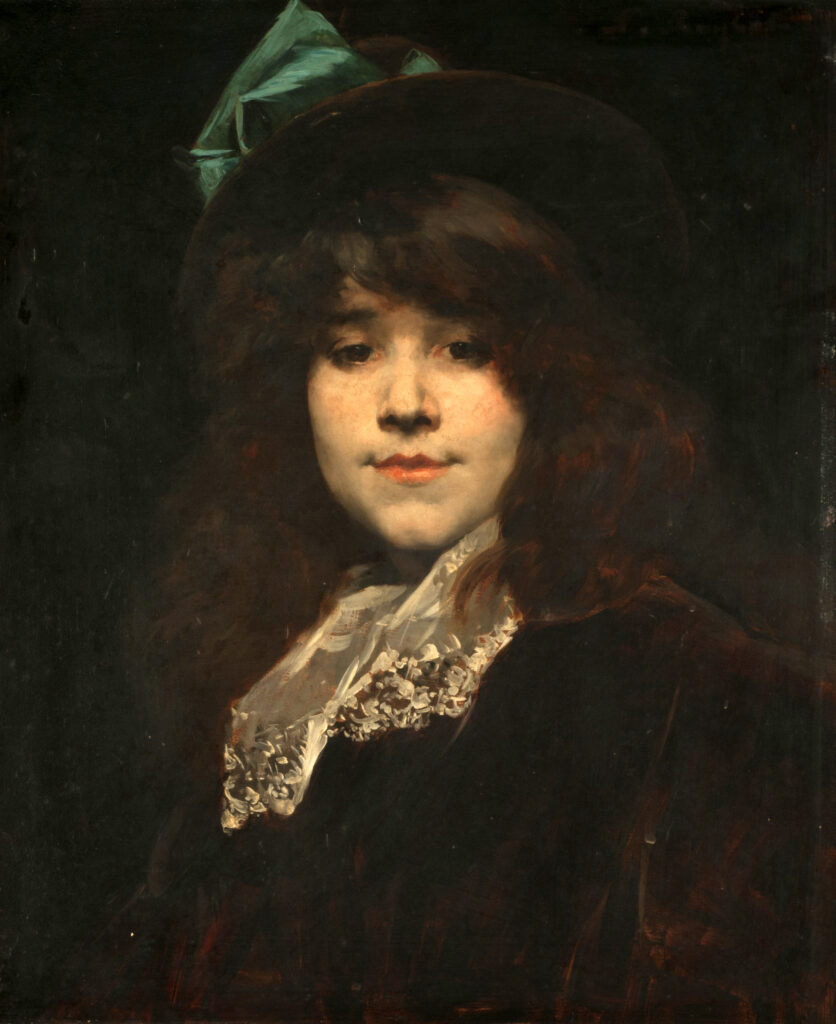
Ferdinand Roybet, Portrait of Juana Romani, 1890. Wikimedia (public domain).
Romani’s career soared as she quickly became a favorite among renowned artists and art institutions. Italian sculptor Filippo Colarossi became particularly fond of her, inviting her to work as a model at his acclaimed school, Académie Colarossi. She modeled for numerous other established painters, among them Carolus-Duran (1837-1917), Victor Prouvé (1858-1943), Jean-Jacques Henner (1829-1905), and Ferdinand Roybet (1840-1920). In 1882, she posed for Alexandre Falguière’s celebrated sculpture, Diana the Huntress.
After having posed for years, Romani became her own model in nearly all of her works
Endless hours spent in studios ultimately fostered Romani’s own artistic talent. In between sittings, she would find herself picking up used charcoal pencils to draw on old papers left behind by pupils in training. So, at age 19, Romani took up painting as a profession. She began her formal training by studying with Jean-Jacques Henner and Ferdinand Roybet.
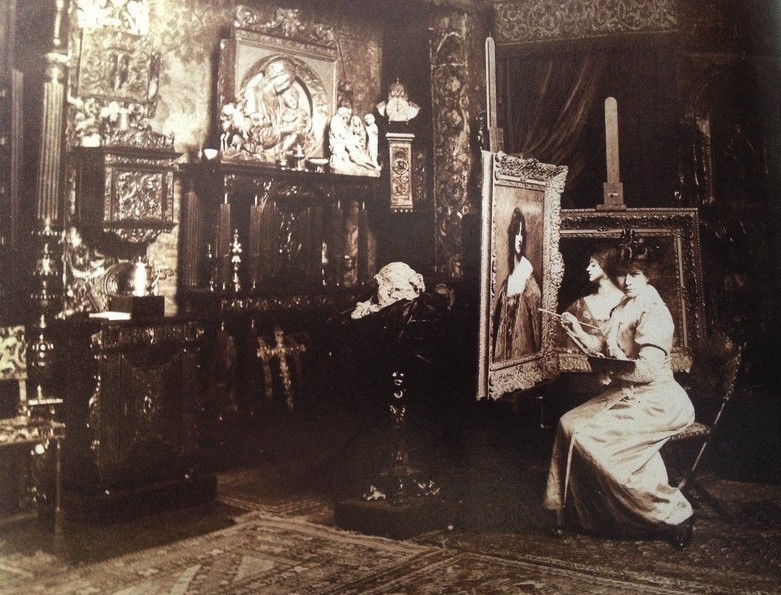
Juana Romani in her studio, c.1892, Petit Palais, Paris, France. Sotheby’s.
Ferdinand Roybet would become a pivotal figure in Romani’s life. Before long, the two were inseparable. He was her teacher; she was his muse turned mistress. Together, the pair opened their very own atelier on 24 Rue du Mont Thabor, not far from the Champs-Élysées. Romani and Roybet quickly became part of the Parisian art society, actively partaking in the latest discussions on Impressionism and Modern art. Together, they traveled to Spain and Italy, where they studied the great masters, particularly 17th-century Spanish painter Diego Velázquez. Some critics considered Romani a “follower” of Roybet as their works could be difficult to tell apart. Like Roybet, Romani chose to paint mysterious, historical figures in costume. Yet, Romani was esteemed for her portraits of female subjects.
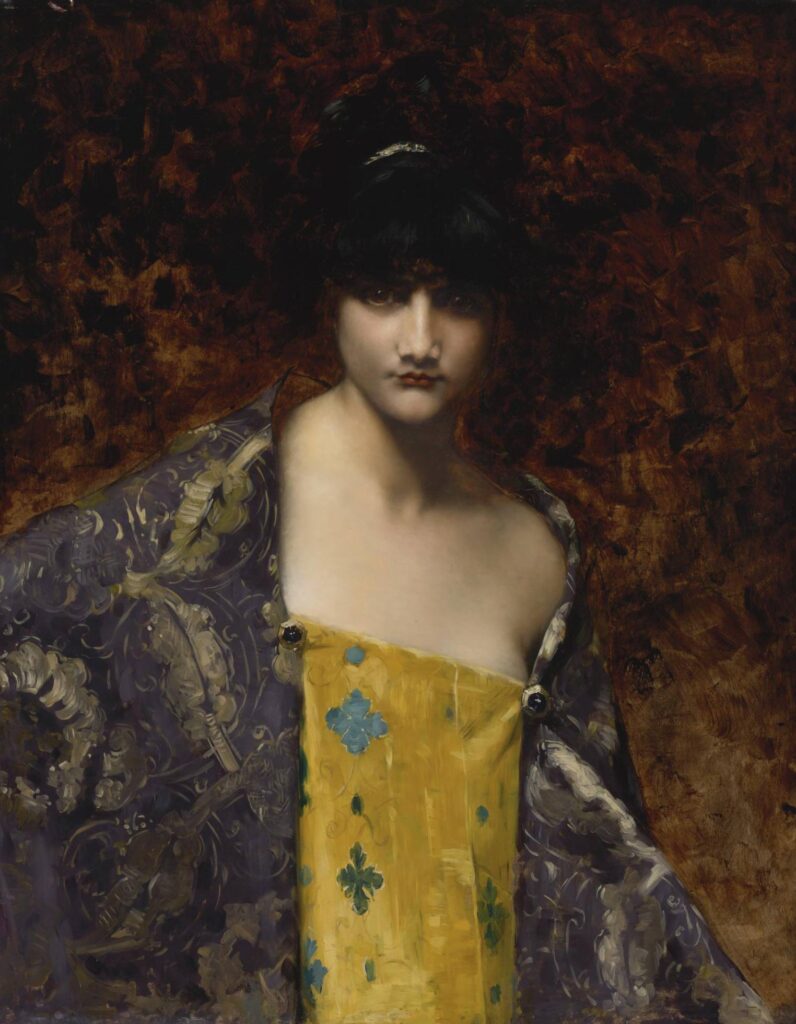
Juana Romani, La Fille de Théodora, 1893, Paris, private collection. Finestre sull’Arte.
Romani used her preferred medium of oil on panel to portray the rich inner worlds of women. She was known to paint directly on the canvas, foregoing preliminary sketches. In her works, we come vis-à-vis with entrancing biblical heroines, sensual femmes fatales, and noblewomen depicted as mythological figures. Romani excelled at rendering the intricate details of the fabrics worn by her sitters. In her compositions, she strikes a constant balance of light and dark, heightening her subjects’ sensuality and intrigue. Their commanding, often theatrical, presence captivates us straightaway.
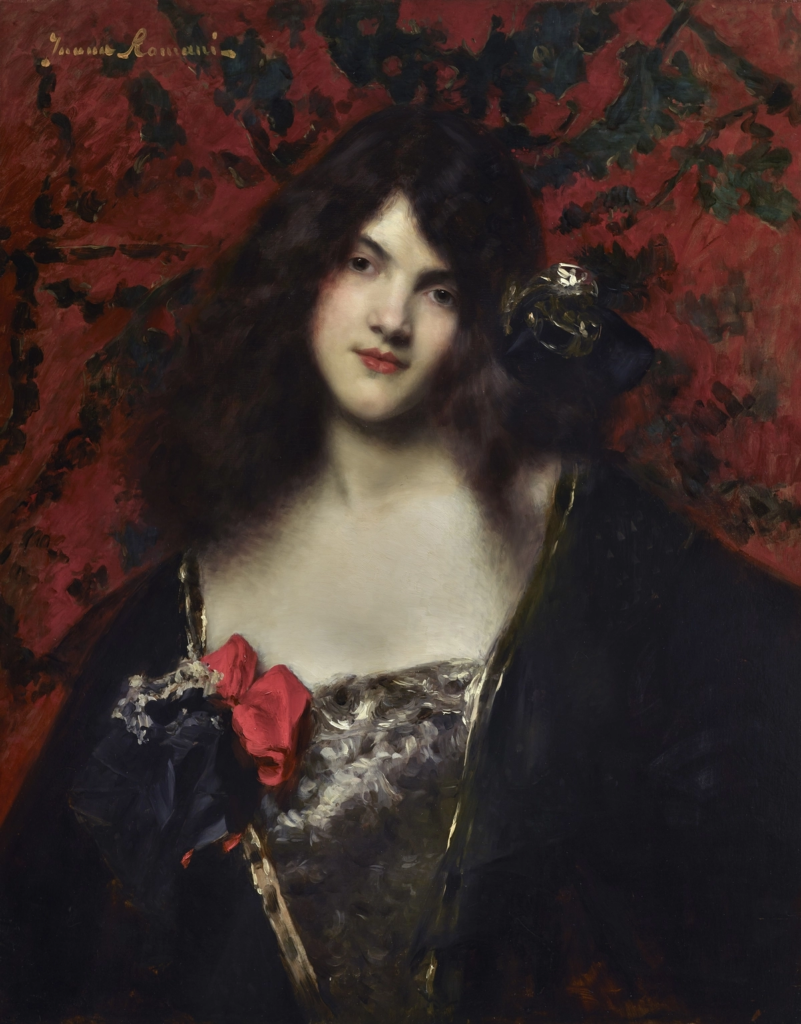
Juana Romani, Portrait of a Woman against Red Backdrop, c.1900, The John and Mable Ringling Museum of Art, Sarasota, FL, USA. Wikimedia Commons (public domain).
Inspired by figures from history and literature, Juana Romani’s portraits represent strong and resourceful women who appear impatient to emerge from the canvas and subvert the roles that have long been imposed on them by society.
Juana Romani (2023)
In 1888, Romani first exhibited her work at the Salon of the Société des Artists Français, where she received critical acclaim. Her talent was immediately noted, and she would go on to be a regular exhibitor at the Salon for the next 15 years. Furthermore, Romani exhibited at the Exposition Universelle of 1900 and the Venice Biennale in 1901.
Romani reached rare levels of success in France, acquiring numerous wealthy Parisian patrons and even becoming the face of the products she endorsed. Yet, by 1904, at the height of her fame, she began to suffer paranoid hallucinations. After the death of her dear friend Jean-Jacques Henner in 1905 and subsequently her mother in 1909, Romani’s condition spiraled out of control. She would abandon her paintbrush altogether, spending the latter part of her life in a psychiatric hospital. After her departure from the art world, Romani fell into oblivion. She died in anonymity in 1923.
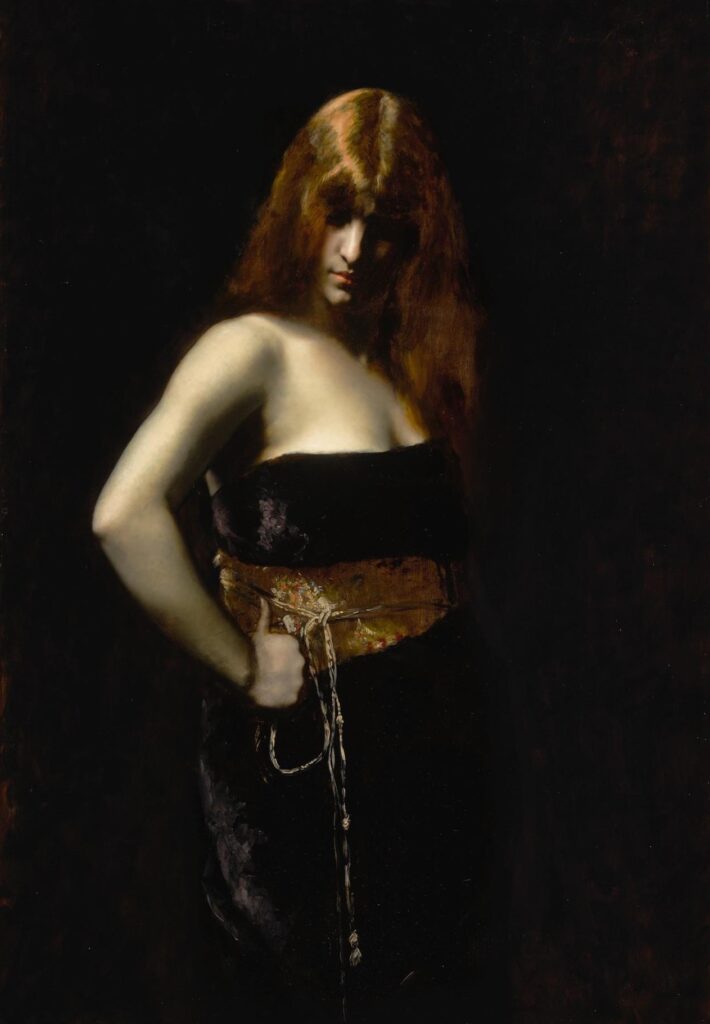
Juana Romani, Hérodiade, 1890, Daniel Katz Gallery, London, UK. Art Salon.
Nearly a century after her death, Romani has regained her eminence following the rediscovery of her artistic talent. Two important exhibitions were held in her honor in recent years: one in her hometown of Velletri, Italy, between 2017-2018, and another at the Musée Roybet Fould in Courbevoie, France, in 2021. Today, the majority of Romani’s works hang in private collections around the world. Much like the women in her portraits, Romani has begun to surface from the shadows, determined to reclaim her rightful place in history.
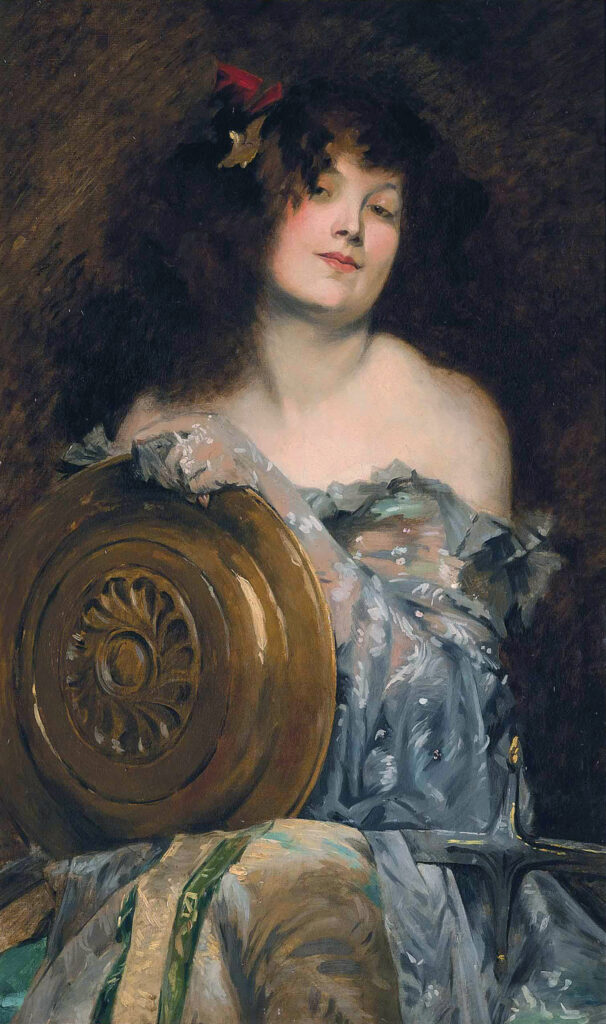
Juana Romani, Portrait of the Artist as Salomé, c.1900. Wikimedia Commons (public domain).
DailyArt Magazine needs your support. Every contribution, however big or small, is very valuable for our future. Thanks to it, we will be able to sustain and grow the Magazine. Thank you for your help!